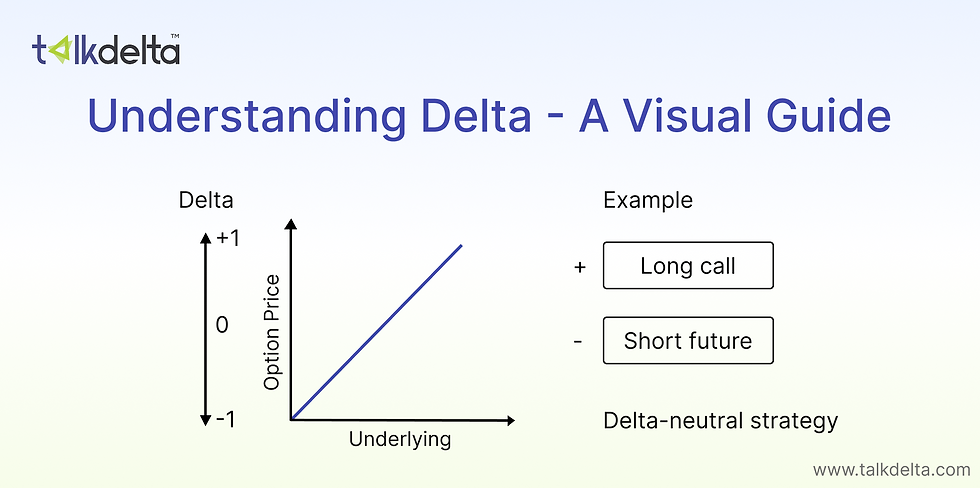Fibonacci Retracement Levels
- Rohit More
- Mar 23, 2022
- 4 min read

Let us start with understanding what Fibonacci retracement levels are. So, while defining retracement level, we can say that it is a horizontal line of numbers or price, which indicates the likeliness of support and resistance to occur at a particular time frame. Every level is in line with the percentage. This percentage shows how much percentage the last move has retraced and how likely it will move again. The percentage levels in Fibonacci levels are 23.6%, 38.2%, 61.8% and 78.6%. Sometimes 50% is also used unofficially. These percentage indicators become useful to extract significant points between high and low. Let us assume the share price of a stock is Rs. 10 and drops to 2.36; then it can be said it has retraced to 23.6%, which is a Fibonacci number. Financial traders accept the relevance and importance of Fibonacci numbers in the market.
You might think, who invented this series of percentage patterns in the share market? To answer this, please keep reading. These levels are named after an Italian Mathematician Leonardo Pisano Bigollo, known as Leonardo Fibonacci. The pattern is just named after it because he shared these details with European countries. The actual truth is it was discovered long back in India by an Indian Merchant, and Leonardo learned from him. From ancient times, retirement levels are prevailing in India between 450 and 200 BCE. This retracement pattern has been used in India Since then. Significant work was done on these number systems by great scholars of India. It is believed that great Indian Mathematician Acharya Virahanka has developed Fibonacci Numbers, and the method of sequencing them was found in 600 AD. After the discovery by Acharya Viranhka, many Indian Scholars did more research on that naming, Gopala, Hemachandra, and Narayan Pandita. Pandita found the correlation between Fibonacci numbers and multinomial Coefficients, resulting in the greater usage of Fibonacci Numbers. So, now we are a little clear with what are Fibonacci retracement levels. Let us move ahead with how to calculate Fibonacci retracement levels?
How to calculate Fibonacci retracement levels
The Fibonacci levels are the series of numbers kept in a sequence in which every number is the sum of its 2 previous numbers.
Example: 0,1,1,2,3,5,8,13, 21,34,55,89,144 and it goes on…
There is an interesting fact here, which applies to many things such as the Number of Flower petals, the Structure of the branches of trees, Various spaces (Cosmology), Geometry, and even Human DNA. This is called a Golden Ratio, which can be found by Dividing any two numbers in the Fibonacci sequence.
Example: 21/34 = 0.618
34/55 = 0.618
55/89 = 0.618 or it can be said as 61.8%
Looking at such beautiful creations in nature, people began to experiment more and more and applied a lot of multiplications and divisions with various numbers on the Fibonacci sequence. The traders now have more faith in significant ratios, as it is occurring in natural phenomena too, and it gained a lot of popularity among the traders.
To calculate the Fibonacci Retracement levels:
Understand the Fibonacci retracement levels formula.
H - High
L - Low
UR- Upper Retarcement
UE - Uptrend Extension
DR - Downtrend Retracement
DE - Downtrend Extensions
To Calculate the Fibonacci Retracement levels in the Uptrend or Bullish market use the below Fibonacci retracement levels formula as mentioned below:
UR = H -((H-l) *Percentage)
UE = H + ((H-l) *Percentage)
To Calculate the Fibonacci Retracement levels in the downtrend or Bearish market use the below formula:
DR = L + ((H-L)* percentage )
DE = L - ((H-L)* percentage )
Let us understand the equation or formula with an example:
To calculate the Fibonacci retracement level of any chart, you have to pick up 2 points, one high and another low. Let's assume the stock price rises from Rs. 10 to Rs.13.82. Then we will take these 2 points to plot a retracement indicator.
As we have seen the price rise, we will use the 0.236 or 23.6 Uptrend retracement level:
UR = H -((H-l) *Percentage)
13.82 - ((13.82-10)*0.236) = 12.92
In the same way, if you want to calculate for different percentages, change the value of the percentage in the above formula, and you will get the answer for various percentage levels. We hope this information suffice the question of how to calculate Fibonacci retracement levels.
Fibonacci retracement levels Calculator
If you are not too good at calculations or do not want to invest much time in calculating the retracement levels manually, you can try the Calculator available online. They are simple to use and can give you the result instantly. Not only do they provide the retracement levels but also Extensions levels.
To use the Fibonacci retracement levels calculator, you are supposed to follow the below mentioned simple steps:
Choose the direction of the trend - Upward or Downward.
Select Retracement from the computing options.
Enter the High price and Low price.
You will get the result infraction of seconds via the Fibonacci Calculator online.
As previously mentioned, the Fibonacci Level helps the technical analyst identify the support and resistance levels. Thus, it should be calculated precisely because this helps traders to decide whether they can enter or exit from the trade.
Conclusion
We hope you find this article worth reading, and we believe the information provided herewith will help you at some point in your financial trading journey. Your implementation of this knowledge is our success.



Comments